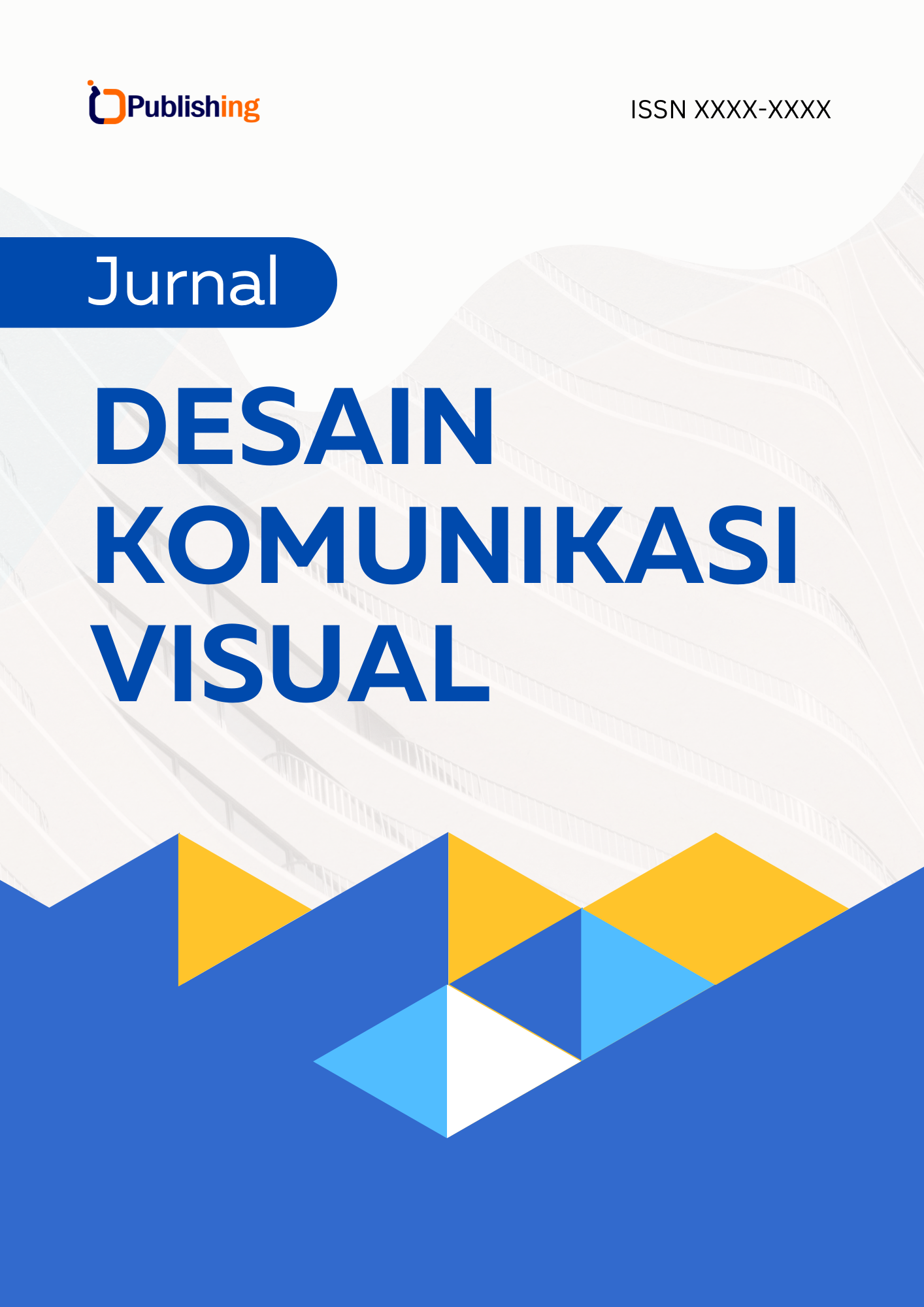Redesign Logo Brand dan Kemasan Dodol Garut Picnic Makanan Khas Garut
DOI:
https://doi.org/10.47134/dkv.v1i1.2167Keywords:
Identitas Perusahaan, Budaya Indonesia, Logo Brand, KemasanAbstract
Dodol Garut Picnic merupakan salah satu makanan khas Garut yang banyak dicari oleh para wisatawan sehingga logo brand dan kemasan yang dimiliki harus menarik dan jelas. Penelitian ini bertujuan untuk menghasilkan sebuah identitas Perusahaan yang mampu memberikan citra yang lebih baik dan konsisten sekaligus menjadi pengenalan budaya untuk berbagai generasi baik nasional maupun internasional sehingga mampu meningkatkan daya jual dan daya saing produk Indonesia. Metode penelitian yang digunakan adalah metode kualitatif dengan berbagai tahap yakni pengumpulan data dari jurnal- jurnal resmi, buku, referensi, website serta wawancara hingga observasi. Hal yang ingin dicapai dari penelitian ini adalah sebuah logo brand dan kemasan dodol garut Picnic yang dikemas dengan salah satu motif batik Garutan. Redesign logo brand dan kemasan dodol garut picnic ini dirancang dengan memadukan nilai budaya-budaya Indonesia untuk meningkatkan citra Perusahaan, daya saing dan daya jual produk Indonesia sekaligus sebuah pengenalan budaya Indonesia. Perancangan ini juga bertujuan mengetahui proses redesign logo dan kemasan yang baik dan menarik, proses membuat event launching produk yang menarik dan informatif serta proses pengaplikasian logo brand dan kemasan kedalam media promosi yang menarik dan informatif.
References
Ackermann, C. (2019). An experimental study to investigate design and assessment criteria: What is important for communication between pedestrians and automated vehicles? Applied Ergonomics, 75, 272–282. https://doi.org/10.1016/j.apergo.2018.11.002 DOI: https://doi.org/10.1016/j.apergo.2018.11.002
Agnisarman, S. (2019). A survey of automation-enabled human-in-the-loop systems for infrastructure visual inspection. Automation in Construction, 97, 52–76. https://doi.org/10.1016/j.autcon.2018.10.019 DOI: https://doi.org/10.1016/j.autcon.2018.10.019
Azevedo, R. G. D. A. (2020). Visual Distortions in 360° Videos. IEEE Transactions on Circuits and Systems for Video Technology, 30(8), 2524–2537. https://doi.org/10.1109/TCSVT.2019.2927344 DOI: https://doi.org/10.1109/TCSVT.2019.2927344
Chung, S. (2019). Visual CSR Messages and the Effects of Emotional Valence and Arousal on Perceived CSR Motives, Attitude, and Behavioral Intentions. Communication Research, 46(7), 926–947. https://doi.org/10.1177/0093650216689161 DOI: https://doi.org/10.1177/0093650216689161
Davis, K. (2019). Beyond interviews and focus groups: A framework for integrating innovative qualitative methods into randomised controlled trials of complex public health interventions. Trials, 20(1). https://doi.org/10.1186/s13063-019-3439-8 DOI: https://doi.org/10.1186/s13063-019-3439-8
Dimara, E. (2020). A Task-Based Taxonomy of Cognitive Biases for Information Visualization. IEEE Transactions on Visualization and Computer Graphics, 26(2), 1413–1432. https://doi.org/10.1109/TVCG.2018.2872577 DOI: https://doi.org/10.1109/TVCG.2018.2872577
Engström, E. (2020). How software engineering research aligns with design science: a review. Empirical Software Engineering, 25(4), 2630–2660. https://doi.org/10.1007/s10664-020-09818-7 DOI: https://doi.org/10.1007/s10664-020-09818-7
Fan, M. (2020). The application of computer graphics processing in visual communication design. Journal of Intelligent and Fuzzy Systems, 39(4), 5183–5191. https://doi.org/10.3233/JIFS-189003 DOI: https://doi.org/10.3233/JIFS-189003
Galati, R. (2020). Experimental Setup Employed in the Operating Room Based on Virtual and Mixed Reality: Analysis of Pros and Cons in Open Abdomen Surgery. Journal of Healthcare Engineering, 2020. https://doi.org/10.1155/2020/8851964 DOI: https://doi.org/10.1155/2020/8851964
Georgiadou, M. C. (2019). An overview of benefits and challenges of building information modelling (BIM) adoption in UK residential projects. Construction Innovation, 19(3), 298–320. https://doi.org/10.1108/CI-04-2017-0030 DOI: https://doi.org/10.1108/CI-04-2017-0030
Gretzel, U. (2019). Smart destination brands: semiotic analysis of visual and verbal signs. International Journal of Tourism Cities, 5(4), 560–580. https://doi.org/10.1108/IJTC-09-2019-0159 DOI: https://doi.org/10.1108/IJTC-09-2019-0159
Huang, H. (2020). Pericyte-endothelial interactions in the retinal microvasculature. International Journal of Molecular Sciences, 21(19), 1–18. https://doi.org/10.3390/ijms21197413 DOI: https://doi.org/10.3390/ijms21197413
Husebø, B. S. (2019). The Effect of a Multicomponent Intervention on Quality of Life in Residents of Nursing Homes: A Randomized Controlled Trial (COSMOS). Journal of the American Medical Directors Association, 20(3), 330–339. https://doi.org/10.1016/j.jamda.2018.11.006 DOI: https://doi.org/10.1016/j.jamda.2018.11.006
Ji, X. (2019). Visual Exploration of Neural Document Embedding in Information Retrieval: Semantics and Feature Selection. IEEE Transactions on Visualization and Computer Graphics, 25(6), 2181–2192. https://doi.org/10.1109/TVCG.2019.2903946 DOI: https://doi.org/10.1109/TVCG.2019.2903946
Jin, C. H. (2019). The influence of brand color identity on brand association and loyalty. Journal of Product and Brand Management, 28(1), 50–62. https://doi.org/10.1108/JPBM-09-2017-1587 DOI: https://doi.org/10.1108/JPBM-09-2017-1587
Jin, S. V. (2020). Instagram fashionistas, luxury visual image strategies and vanity. Journal of Product and Brand Management, 29(3), 355–368. https://doi.org/10.1108/JPBM-08-2018-1987 DOI: https://doi.org/10.1108/JPBM-08-2018-1987
Kohn, A. (2020). Principles of Corticocortical Communication: Proposed Schemes and Design Considerations. Trends in Neurosciences, 43(9), 725–737. https://doi.org/10.1016/j.tins.2020.07.001 DOI: https://doi.org/10.1016/j.tins.2020.07.001
Kusumasondjaja, S. (2020). Exploring the role of visual aesthetics and presentation modality in luxury fashion brand communication on Instagram. Journal of Fashion Marketing and Management, 24(1), 15–31. https://doi.org/10.1108/JFMM-02-2019-0019 DOI: https://doi.org/10.1108/JFMM-02-2019-0019
Lawrence, J. (2021). Project Starline: A high-fidelity telepresence system. ACM Transactions on Graphics, 40(6). https://doi.org/10.1145/3478513.3480490 DOI: https://doi.org/10.1145/3478513.3480490
Lee, H. Y. (2020). Neural Design Network: Graphic Layout Generation with Constraints. Lecture Notes in Computer Science (Including Subseries Lecture Notes in Artificial Intelligence and Lecture Notes in Bioinformatics), 12348, 491–506. https://doi.org/10.1007/978-3-030-58580-8_29 DOI: https://doi.org/10.1007/978-3-030-58580-8_29
Li, H. (2019). Read, Watch, Listen, and Summarize: Multi-Modal Summarization for Asynchronous Text, Image, Audio and Video. IEEE Transactions on Knowledge and Data Engineering, 31(5), 996–1009. https://doi.org/10.1109/TKDE.2018.2848260 DOI: https://doi.org/10.1109/TKDE.2018.2848260
Lu, Y. (2020). Investigating Bubble Mechanism for Ray-Casting to Improve 3D Target Acquisition in Virtual Reality. Proceedings - 2020 IEEE Conference on Virtual Reality and 3D User Interfaces, VR 2020, 35–43. https://doi.org/10.1109/VR46266.2020.1581165829725 DOI: https://doi.org/10.1109/VR46266.2020.00021
Mathisen, A. (2019). Insideinsights: Integrating data-driven reporting in collaborative visual analytics. Computer Graphics Forum, 38(3), 649–661. https://doi.org/10.1111/cgf.13717 DOI: https://doi.org/10.1111/cgf.13717
Naboni, E. (2019). A digital workflow to quantify regenerative urban design in the context of a changing climate. Renewable and Sustainable Energy Reviews, 113. https://doi.org/10.1016/j.rser.2019.109255 DOI: https://doi.org/10.1016/j.rser.2019.109255
Nemat, B. (2019). The role of food packaging design in consumer recycling behavior-a literature review. Sustainability (Switzerland), 11(16). https://doi.org/10.3390/su11164350 DOI: https://doi.org/10.3390/su11164350
Nguyen, T. T. (2019). Designing for Projection-based Communication between Autonomous Vehicles and Pedestrians. Proceedings - 11th International ACM Conference on Automotive User Interfaces and Interactive Vehicular Applications, AutomotiveUI 2019, 284–294. https://doi.org/10.1145/3342197.3344543 DOI: https://doi.org/10.1145/3342197.3344543
Nia, M. R. (2020). Analyzing the effects of visual aesthetic of Web pages on users’ responses in online retailing using the VisAWI method. Journal of Research in Interactive Marketing, 14(4), 357–389. https://doi.org/10.1108/JRIM-11-2018-0147 DOI: https://doi.org/10.1108/JRIM-11-2018-0147
Onorati, T. (2019). From social networks to emergency operation centers: A semantic visualization approach. Future Generation Computer Systems, 95, 829–840. https://doi.org/10.1016/j.future.2018.01.052 DOI: https://doi.org/10.1016/j.future.2018.01.052
Thibodeau, L. M. (2021). Communicating during COVID-19: The Effect of Transparent Masks for Speech Recognition in Noise. Ear and Hearing, 42(4), 772–781. https://doi.org/10.1097/AUD.0000000000001065 DOI: https://doi.org/10.1097/AUD.0000000000001065
Wall, E. (2019). A heuristic approach to value-driven evaluation of visualizations. IEEE Transactions on Visualization and Computer Graphics, 25(1), 491–500. https://doi.org/10.1109/TVCG.2018.2865146 DOI: https://doi.org/10.1109/TVCG.2018.2865146
Wilk, V. (2019). Tackling social media data analysis: Comparing and contrasting QSR NVivo and Leximancer. Qualitative Market Research, 22(2), 94–113. https://doi.org/10.1108/QMR-01-2017-0021 DOI: https://doi.org/10.1108/QMR-01-2017-0021









